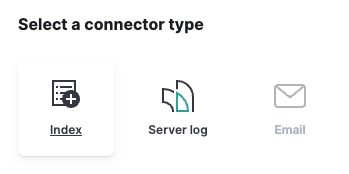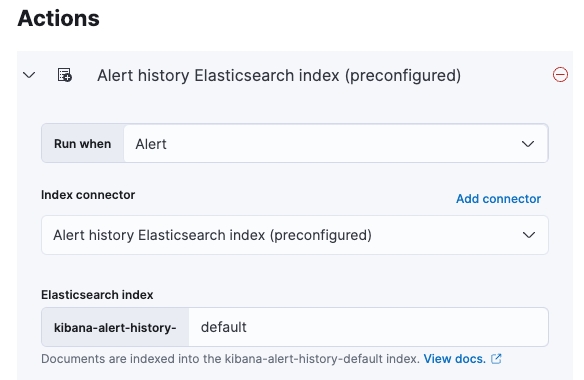9.4 Setting up alerts
All alerts and thresholds can be managed through Management -> Stack Management -> Alerts and Insights -> Rules and Connectors. OpenCRVS comes with a set of preconfigured alerts, but we recommended these alerts be customised to your country's needs.
Currently, OpenCRVS supports email alerts out of the box. Other types are available by customising your country config package.
Preconfigured alerts
Alert
CPU load on any node
>70%
Alert
Service error
>0
Alert
Available disk space on encrypted data storage
<30 %
Setting up a new alert
Basic instructions for setting up alerts can be found from Kibana documentation under Alerts and rules.
It is important to use "Index" as the connection type when setting up new alerts. This option instructs Kibana to write alerts to an Elasticsearch index from where other tools can get notified about errors happening in the system.

Our alerting tool Elastalert2 reads alerts from a preconfigured index named kibana-alert-history-default and is configured to send an email to ALERT_EMAIL email address. This email address can be changed as part of deployment.

Read more: